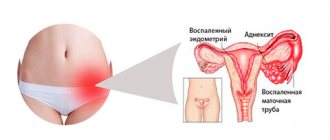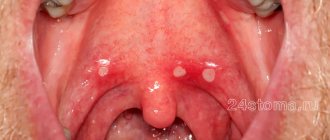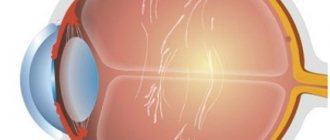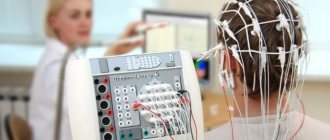Periostitis is an inflammation of the periosteum, which most often develops as a result of other diseases. Typically, the inflammatory process begins in one layer of the periosteum, and as the disease progresses, it spreads to the rest. The bone and periosteum are closely connected to each other, so there is a possibility of developing a complication in the form of osteoperiostitis - the spread of inflammation, including to bone tissue.
Uncomplicated forms of periostitis are treated by dentists. In addition to treating this disease, it is important to pay attention to the treatment of the underlying pathology that caused the inflammation.
Etiology and pathogenesis
The development of periostitis most often occurs with inflammatory diseases of the oral cavity and teeth, pulpitis and periodontitis. Also, the development of purulent inflammation of the periosteum can occur after jaw fractures, injuries and wounds of the soft tissues of the cheek, after treatment with anesthesia. Through damage to the dental tissue, gums or cheeks, the pathogen enters the jawbone, causing inflammation.
Acute periostitis can develop as a result of acute or chronic periodontitis, with suppuration of odontogenic cysts, and difficulty in teething. The process begins with the inner layer of the periosteum, gradually spreading to all other layers. Periostitis occurs when the focus of primary infection of the tooth canal or gum is blocked and its contents penetrate into the periosteum. The exudate penetrates through small holes in the alveolar plate through the channels.
Less commonly, flux develops in diseases of the pharynx (sore throat, pharyngitis, laryngotracheitis) or in the presence of a focus of infection in the body, from where it can be transferred to the periosteum with the blood or lymph flow.
When examining purulent contents during purulent periostitis, staphylococci (Staphylococcus aureus is one of the main causes of flux development), streptococci, various types of bacilli and putrefactive bacteria are often found.
Reference! 25% of all pathogenic microflora during flux are aerobic bacteria, the rest is anaerobic forms.
General factors influencing the development of the disease:
- weak immunity;
- hypothermia;
- stressful situations;
- poor oral hygiene;
- carious processes in teeth;
- old fillings;
- frequent medical interventions;
- bad habits.
Forms of periostitis
Depending on the cause of the flux and its course, we talk about its forms:
- Acute: simple – occurs as a result of a bruise of the face, with fractures and injuries of the jaw bones;
- purulent – penetration of periodontal infection to the periosteum;
- tuberculosis - when Koch's bacillus is carried into the periosteum and bone tuberculosis;
- syphilitic - as a complication of congenital or acquired syphilis.
- ossifying – chronic form with the development of compactions in the form of bone tissue;
Symptoms of the disease
Signs of pathology largely depend on the individual characteristics of the patient’s body, however, there are general symptoms that indicate the appearance of gumboil:
- a lump on the mucous membrane, which has different sizes - up to several cm in diameter and even in height,
- formation of an abscess and fistula if there is purulent inflammation,
- sharp pain that can radiate to the ear, eyes or temples,
- swelling of the gums and parts of the face,
- enlarged lymph nodes in the neck and under the jaw,
- fever up to 38 degrees, general weakness and poor health.
In some cases, a fistula opening appears on the abscess itself, through which purulent masses will enter the oral cavity. In this case, the pain becomes less pronounced, the patient’s condition improves, because there is an outflow of pus and a decrease in the inflammatory process. However, this does not mean at all that a complete cure has occurred - the pus will not be able to come out completely on its own. Drug therapy and surgical intervention are still required, i.e. specialist help.
Clinical picture
The main symptom for all types of flux is severe toothache at the site of infection, sometimes diffuse (with extensive bone damage). Swelling gradually begins to increase: first it is localized above the site of inflammation, and then along the surrounding tissues, sometimes affecting the neck, temple and eye.
Important! Sometimes flux occurs painlessly or with a mild pain effect, which, as a rule, indicates the development of a chronic form with sluggish inflammation and periodic relapses.
Inflammation is accompanied by the following symptoms:
- pulsation at the site of the lesion;
- increase in body temperature to subfebrile and febrile levels;
- headache;
- enlarged lymph nodes on the affected side;
- weakness, lethargy, lack of appetite;
- pain when swallowing, talking, opening the mouth;
- pain when pressing on the gum;
- redness of the oral mucosa at the site of the lesion.
Inflammation of the periosteum
Dentistry defines odontogenic periostitis as acute inflammation of the periosteum of the alveolar process of the upper jaw or the alveolar part of the lower jaw. The disease is of odontogenic origin, that is, it is caused by a diseased tooth. As a rule, periostitis is a complication of untreated periodontitis. Less commonly, the infection enters the jaws through blood vessels from other areas of inflammation. Odontogenic periostitis has unpleasant symptoms (one of them is severe toothache), the elimination of which requires surgical treatment.
Usually the disease begins in the inner or outer layer of the periosteum, but due to the close connection between it and the jaw bone, the inflammatory process easily passes from one tissue to another, causing osteoperiostitis. There are acute periostitis, which in turn is divided into serous, purulent and chronic. The inflammatory process can be either limited or diffuse purulent, when the inflammation spreads to the body of the jaw.
Therapy and rehabilitation
Treatment of the disease is carried out by two methods - conservative and surgical. The choice of method depends on the form of the disease, its severity, and the course of the disease. In the early stages of development of the pathological process, conservative treatment is possible by prescribing a complex of drugs:
- broad spectrum antibiotics
- anti-inflammatory;
- painkillers;
- antipyretic.
IMPORTANT! Conservative treatment requires careful compliance with all doctor’s instructions until the process is completely eliminated. Otherwise, there is a risk of the disease becoming chronic.
Purulent periostitis is treated by wide opening of the purulent sac with dissection of the periosteum to the bone. At the same time, the issue of treating the tooth that caused the inflammatory process is being resolved. Most often, such a tooth is removed. After removing the pus, medications are prescribed, including antibiotics, anti-inflammatory and painkillers. Additionally, physical therapy may be prescribed: UHF, microwaves. The patient is recommended to frequently rinse the mouth with a solution of baking soda or sage tincture.
Simple periostitis requires complete rest of the injured area and treatment with physiotherapeutic procedures. All other types are reduced to treating the underlying disease or eliminating the focus of fibrous tissue growth.
IMPORTANT! Under no circumstances should you treat flux yourself. It is especially not recommended to pierce a purulent sac: there is a high risk of infection in neighboring tissues.
To speed up the treatment and recovery processes, you can resort to traditional medicine methods.
Causes of periostitis
The cause of periostitis of the jaw can be trauma, as well as an inflammatory disease in the oral cavity - pulpitis, periodontitis, acute gingivitis, etc. More rare causes are rheumatic diseases, venous pathologies, specific infections, allergic reactions, chronic somatic diseases.
The classic variant of the development of the disease is caries complicated by pulpitis. Inflammation spreads to the periodontal tissues, periodontitis appears - inflammation of the periodontal tissues. If left untreated, the periosteum is also affected. In this case, we are talking about odontogenic periostitis - a disease that appears against the background of dental disease.
Ask a Question
Prevention
Flux is easier to prevent than to treat. Prevention methods are simple and known to almost everyone. They consist of timely treatment of carious teeth, timely removal of the gum hood from wisdom teeth, the correct choice of toothbrush and toothpaste, and timely replacement of oral hygiene products. It is recommended that you visit your dentist at least twice a year and have your teeth professionally deep cleaned to remove plaque at least once a year.
IMPORTANT! Don’t forget about strengthening your immune system and giving up bad habits.
Dental flux is an unpleasant disease that requires treatment by specialists at an early stage of development. Self-medication in case of periostitis is unacceptable. With a favorable course and initial stage of development, conservative treatment is possible, but most often they resort to the surgical method.
Classification of acute periostitis
In the classification of acute periostitis, the following points should be highlighted. These are the causes of acute periostitis:
- odontogenic periostitis;
- lymphatic periostitis;
- hematogenous periostitis;
- traumatic periostitis;
Course of acute periostitis:
- serous periostitis of the jaws;
- purulent periostitis of the jaws.
Process distribution:
- limited periostitis of the jaws;
- diffuse periostitis of the jaws.
How to treat periostitis?
Odontogenic periostitis involves various treatments, the type of which depends on the severity of the disease and the process of its progression. In the case of acute serous periostitis, it is enough to remove the nerve of the tooth and wash the opened wound with solutions of antiseptics and antibiotics. If there is acute purulent periostitis, treatment is supplemented with physiotherapy. In cases where periostitis requires active anti-inflammatory therapy, the patient is prescribed antibiotics. In case of chronic periostitis, the diseased tooth is usually removed.
General treatment of periostitis involves the prescription of antibacterial and anti-allergic drugs, as well as strengthening agents in the form of calcium and vitamins. With timely treatment, recovery occurs within 3–5 days. Without medical assistance, periostitis can provoke the formation of a fistula on the gum or the penetration of pus into the surrounding tissues with the development of an abscess or phlegmon, which is most dangerous for the patient.
Periostitis is a dangerous disease that threatens with serious consequences not only for your teeth and gums, but also for the entire body. At the first signs of periostitis, you should immediately contact a dental clinic and begin treatment. To prevent the disease, maintain oral hygiene and visit the dentist regularly.
Symptoms of periostitis
The main set of signs:
- toothache radiating to the ear, temple, orbital region;
- swelling of the gums - small at first, after 1-3 days the swelling spreads to the area of the cheeks and lips, covering the space from the eye sockets to the submandibular area and causing facial asymmetry;
- hyperemia of mucous tissues;
- temperature rise to 37–38 C;
- suppuration of the inflamed area with the formation of an abscess;
- pathological mobility of the tooth as a result of “bulging out” (purulent melting) of the retaining ligaments;
- numbness of soft tissues - tongue, cheeks, lips, sometimes the wings of the nose (Vincent's symptom);
- swelling and tenderness of adjacent lymph nodes - cervical, parotid, retropharyngeal, submandibular;
- deterioration in general health – weakness, loss of strength, irritability, possible lack of appetite, nausea;
- bone tumors in the area of destruction of the periosteum with subsequent deformation of the jaw;
Attention! Periostitis of the upper jaw, in the absence of timely measures, can provoke the development of sinusitis. The reasons are the thin bone wall of the maxillary sinus or the growth of the root of the problematic tooth deep into the sinus.
If the pus finds its way out by perforating the cheek, the symptoms are relieved. Patients may have the illusion of recovery. Stopping treatment at this stage leads to chronicization of the process and further spread of infection, which is fraught with the development of osteomyelitis, and in especially severe cases, sepsis.
Attention! Periostitis rarely occurs as an independent disease - it is usually preceded by one or another dental pathology. Therefore, it is very important to undergo preventive examinations and promptly eliminate detected problems.
Features of treatment in children
This disease is very rare in children. As a rule, in a hematogenous and lymphogenous form, progressing against the background of previous illnesses - acute respiratory viral infections, influenza, tonsillitis, scarlet fever, otitis media, measles, etc. Therefore, therapy is mainly aimed at increasing immunity and generally strengthening the body. Prescriptions are usually made by a pediatrician, not a dentist.
If the disease is caused by damage to the teeth, they are treated (molars, destroyed by less than 50%) or removed (deciduous ones) - in the same ways as for adults. Additionally, physiotherapeutic procedures and antimicrobial therapy are carried out.
Attention! If periostitis is diagnosed in children under five years of age, urgent hospitalization is indicated!
Diagnostics
Only an experienced dentist can accurately determine the form of the disease and prescribe competent treatment after a comprehensive examination.
1. Visual inspection.
The dentist will examine the oral cavity, paying special attention to severely damaged teeth.
2. X-ray of the jaw.
In order to differentiate periostitis from pathologies with similar symptoms (for example, from a dental cyst or acute periodontitis), the doctor may prescribe an X-ray examination.
X-ray allows not only to accurately diagnose periostitis, but also to determine the boundaries of the source of inflammation.
3. General blood test.
If purulent periostitis is suspected, a general blood test is required. An increase in leukocytes and ESR values confirms the purulent form of periostitis.
Stages of surgical treatment of flux:
- anesthesia (usually local);
- opening the focus of suppuration (gum incision);
- removal of pus;
- drainage (installation of drainage to ensure the outflow of inflammatory fluid);
- X-ray (to determine the cause of periostitis);
- removal of a diseased tooth or drug treatment.
In addition, for acute purulent periostitis, antibiotics, physiotherapy and painkillers are usually prescribed. Treating periostitis with antibiotics at home without consulting a doctor can cause side effects and resistance of pathogenic bacteria to the drug.
Chronic periostitis
This form of periostitis is less common than others. Chronic periostitis most often develops in the periosteum of the lower jaw and is characterized by a local inflammatory reaction in the form of dense edema, which does not significantly change facial features. At the site of inflammation, the bone thickens and the lymph nodes enlarge. At the same time, the oral mucosa may become swollen and red. Chronic periostitis does not go away for a long time and can develop over 4–8 months, and sometimes several years, making itself felt with periodic exacerbations.
Treatment of periostitis
Periostitis requires mandatory treatment - local and general. The sooner it starts, the better. The minimum period of therapy until complete recovery is a week.
Local
Local treatment is based on eliminating the most alarming symptom of the disease - the abscess. Under anesthesia, the doctor makes an intraoral incision, cleans the tissue from pus, and washes the wound with antiseptic solutions. For serous periostitis of the jaw, such surgical intervention is not required.
To relieve inflammation of the periosteum of the tooth in any form of the disease, 5-7 sessions of physiotherapy are prescribed:
- fluctuarization - a therapeutic effect on tissues with a weak alternating current;
- UHF - the effect of an electromagnetic field on tissues that have a good blood supply;
- electrophoresis with lidase - injection of medicine into the diseased area using current;
- laser therapy – irradiation with laser light (increases the effect of drug therapy);
- exposure to ultrasound.
To relieve pain during treatment, you can take analgesics - Nurofen, Nimesil, Ketanov and others.
Antibiotics
In addition to physiotherapy, antimicrobial therapy is carried out - but only in the presence of purulent processes. Most often, patients are prescribed Metronidazole in combination with Clindamycin. These drugs are effective against protozoa, various anaerobic bacteria and gram-positive cocci - this is the pathogenic flora most often present in infected tissues.
Dentists sometimes prescribe other broad-spectrum antibiotics:
- Amoxiclav;
- Summed;
- Tsifran St, etc.
General
Methods of general therapy depend primarily on the causes of the disease. In adults, odontogenic and traumatic periostitis is usually observed:
- in 73% of cases it is a consequence of untreated periodontitis;
- in 18% – alveolitis (inflammation of the socket of an extracted tooth);
- in 5% - the appearance of impacted wisdom teeth;
- in 4% - suppuration of the cyst (pathological cavity at the root of the tooth).
For periodontitis, endodontic treatment is carried out - cleaning, sterilization and subsequent filling of the canals, restoration of the crown with filling material or using a prosthesis. The exception is baby teeth and molars with a high degree of destruction, over 50%, which cannot be restored with core inlays, crowns and pins. They are subject to removal. Treatment is indicated only if the teeth have functional value.
In case of alveolitis, the socket is cleaned and disinfected, and applications are made with healing ointments and gels. Impacted wisdom teeth are allowed to erupt normally or are removed if they grow abnormally. If a cyst is present, endodontic treatment is combined with the procedure of cleaning and sterilizing the pathological cavity.
Surgical treatment of periostitis
Types of periostitis
The ICD-10 (tenth revision) classification of diseases developed by the World Health Organization, as amended, identifies three main types of periostitis: acute, chronic and purulent in accordance with classifier code K10.2 (inflammatory diseases of the jaws)4.
Acute periostitis is the most common type of periostitis and, as a rule, is an “accompanying” disease during exacerbation of chronic periodontitis. A rapidly developing inflammatory process causes the accumulation of odontogenic contents at the tooth root, as a result - swelling of the soft tissues and loosening of the periosteum, the inner layer of which melts, which causes detachment of the periosteum, disrupts the blood supply in it and causes deep degenerative changes in the bone tissue.
Purulent periostitis is characterized by the transition of serous contents in the inflammatory focus into serous-purulent, and then into purulent exudate. An abscess occurs, followed by a breakthrough of purulent masses under the mucous membrane of the gums or through the fistulous tract to the outside.
Chronic periostitis always means that in the patient’s body there remains a focus of long-term sensabilization - increased sensitivity to infectious stimuli, for example, in the presence of a diseased tooth that has not been treated in the acute stage of periostitis, or in chronic sinusitis, etc. A long course of chronic periostitis can lead to ossification - proliferation of bone tissue. At even longer periods, a “bulbous pattern” of the periosteum is observed (vertical dissection and layering)3.
Acute serous periostitis
The development of periostitis in the acute serous form occurs within 1 to 3 days and is manifested by swelling of the soft tissues. Its localization depends on the location of the causative tooth, and its size depends on the structure of the vessels of the periosteum. This form of the disease can develop after a bruise or fracture (traumatic, post-traumatic periostitis). The inflammatory process, as a rule, quickly subsides, but sometimes it can lead to fibrous growths or the deposition of calcium salts and new bone formation (ossifying periostitis).
Diagnosis of periostitis
The pronounced symptoms of the inflammatory process in the periosteum make it possible to diagnose it with high accuracy even during a visual examination.
To clarify the diagnosis, the doctor may prescribe additional examination:
- detailed blood test;
- X-ray of the affected area;
- orthopantomogram (photograph of the teeth, which shows the entire jaw);
- computed tomography and MRI.
Based on clinical data and laboratory tests, differential diagnosis is carried out, since there is a possibility of confusing periostitis with other diseases, such as acute osteomyelitis, periodontitis, various types of abscesses, phlegmons, lymphadenitis and other pathologies of the maxillofacial area.










